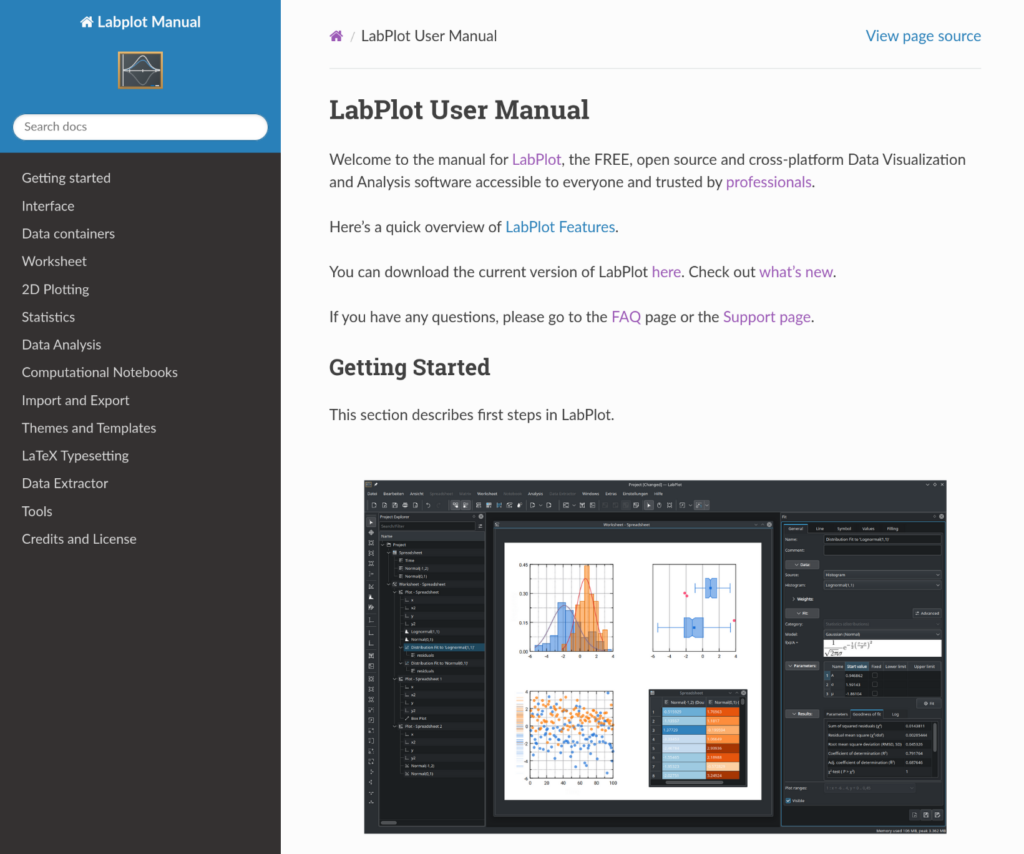New LabPlot User Documentation
In recent weeks we have been working on transferring LabPlot’s documentation to a new format.
We decided to move the documentation from the DocBook and MediaWiki format to the Sphinx/reStrcutredText framework. In our perception Sphinx offers a user-friendly and flexible way to create and manage documentation. Easy math typing and code formatting also come along. Additionally, Sphinx supports basic syntax checks, and modern documentation practices, such as versioning and integration with various output formats like HTML, PDF and ePub.
The new user’s manual is available on a dedicated page: https://docs.labplot.org. Please check it out and let us know what you think.

The manual still needs to be supplemented with new content, so we encourage you to contribute to the documentation, e.g. by fixing and adding new sections, updating images, as collaborative efforts can lead to a more comprehensive resource for everyone. Please check the Git repository dedicated to the documentation to find more details on how to help make it better.
Is there an enzyme kinetic module in LabPlot? E.g. Michaelis-Menten, Hill, Lineweaver-Burk etc.
there is no dedicated module for enzyme kinetics nor for any other specialized and domain specific workflow in LabPlot but rather a generic method to perform curve/model fitting. Please check the https://docs.labplot.org/en/data_analysis/data_analysis_fitting.html for how to do it in LabPlot. For enzyme kinetics you basically need to fit the Michaelis–Menten equation to your data. Same for the Hill equations etc. Some of the models are build-it, for some of them you need to define them manually via “Custom model”. We’ll add soon more documentation for such domain specific applications.